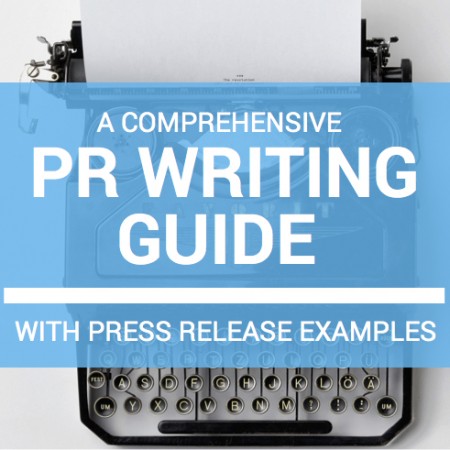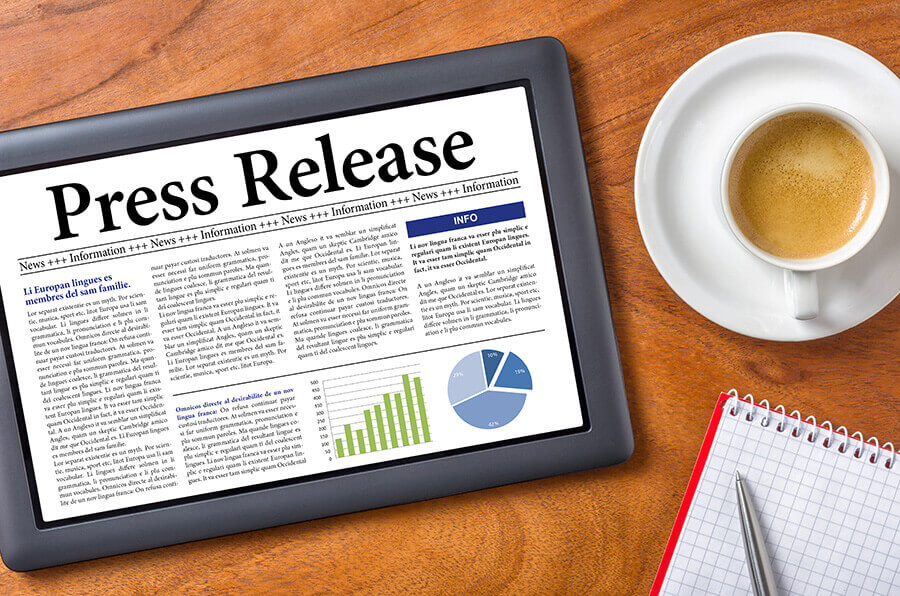How to Write a Press Release: 11 Tips to Fresh Copy
While press releases are an essential part of online marketing and digital communications, they’re tough to write, and few people understand their structure. Because of this, many companies and marketers hire expert writers or journalists to write press releases for them. However, understanding the format and how to write a press release important so you can recognize a good press release when you see it. Then you can always evaluate your press release content and be more successful when promoting your brand image and new products. While press releases can feel foreign, they all contain specific elements that should be present in every press release you issue. In the words of Robert Wyne, a prominent Forbes contributor, press releases “are formulaic, by nature, but so are poetry, tweets, columns, and other written communications. Everyone has constraints. Chefs work within an 8-inch pan to create an omelet, and the great ones know how to pick the best ingredients and mix them to create a savory sensation. Writers can season their sentences within the confines of a release.” When you know what to include in your press release and how to structure it, your PR material will be more official, credible, and useful for readers. This is true whether you plan to write your press releases yourself or hire someone else to do it for you. Follow along as we share the 11 steps required to create an expertly crafted press release. What Is a Press Release? A press release is an official statement from a business or organization that shares news with media outlets and the public. It is a formal document used to distribute relevant information in a simple, one-page format. The goal of a press release is to attract attention from the media and the public. When Should You Use a Press Release? As an official media document, press releases should be reserved for newsworthy events. If used too often for insignificant updates, your releases might get ignored. Press releases are commonly used for the following types of announcements or events: Product launches Significant service changes Hiring or leaving of company executives Funding announcements Breaking news Public and private events Grand openings and groundbreakings Press Releases vs. Company Announcements To the untrained reader, a press release might just seem like a fancy term for a company announcement. While a press release is technically an announcement, from a journalistic perspective, it’s viewed as a primary source that can be cited. Press releases are the source of official information. If a company shares the same news in another way, like a tweet or a blog, it will likely link back to the official press release. Since they are structured more formally, press releases also differ from other types of announcements because they are meant to be shared by media outlets. 11 Steps to Writing a Press Release No matter what kind of business you run, press releases are critical. They are an ideal medium for telling the media, Google, and your readers when something new and exciting has happened within your company. Use press releases to announce partnerships, product launches, new hires, and more. If your business has never written a press release before, don’t worry. Our 11 foundational tips will guide you through the process. 1. Use the Correct Release Language When submitting a press release to a news outlet, you must tell them when you would like it published. If you’re ready for your press release to go out to the public right now, use the words “FOR IMMEDIATE RELEASE” at the top. However, if you need to hold the release until a certain date (this is common with product launches), put “HOLD RELEASE UNTIL” along with your specified date. This is an important piece of your press release article because it tells readers and journalists when you want to see your article on the web or in print. It also gives you control over when the press release hits the media, which can have a massive impact on the success of your press release efforts. 2. Use Your Company Logo and Colors Branding in a press release is crucial if you want your readers to know what your brand represents. To make your press releases more impactful and recognizable, use your company’s logos and colors in the headline section. Check out how the autonomous driving company Motional added their logo to the top of a recent press release: 3. Include Keywords in Your Press Release Headlines Just like in other types of online content, you should include SEO keywords in your press release headlines. This makes it easier for search engines to find and rank your press release while ensuring that the media and your readers understand what your press release is about. Remember: you don’t want to go overboard with keywords – just include them naturally throughout like you do with other content. Check out how Apple does this in a press release published on December 6, 2022. In this case, you could safely assume the keywords Apple targeted include “App Store pricing:” Another consideration is the capitalization of your headlines. If you are following official AP Style capitalization, all the words in your headline should be capitalized except for prepositions and words shorter than four letters. As you can see in the example above, Apple only capitalized proper nouns. However, they published the press release on their website. If they had published the press release on an official news website, choosing title case capitalization would be the better option. For best results, keep your headlines under 160 characters. Longer than that and readers may lose interest, and you risk having your headline truncated by Google. Your headline must pique the interest of a very limited demographic – journalists. While you might want to write for your customers, a press release is for the press. Make sure your headline is factual, informative, and attention-grabbing. Here are a few tips to help you write more effective press … Read more




